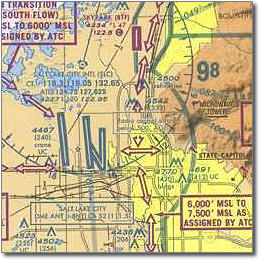Subscriber question:
"I frequently fly VFR under ATL Class B airspace. Do you have any tips for operating near class B, such as how many feet under the floor or near the boundary should I maintain? Should I contact approach or not?" - Anonymous
John:
“VFR Terminal Area charts depict IFR arrival and departures routes along with suggested VFR flyways and altitudes to avoid the flow of IFR aircraft. Study the chart and plan your route before entering the area.
 In the absence of flyways, you should fly cardinal altitudes – plus 500 feet, if above 3,000 AGL. If you are in an area where the floor is lower, allow a few hundred feet below the Class B altitude to prevent an inadvertent climb into the Bravo. Be alert for large and heavy aircraft that may operate near the floor of the Bravo. Wake turbulence will descend and trail the large aircraft for several miles.
In the absence of flyways, you should fly cardinal altitudes – plus 500 feet, if above 3,000 AGL. If you are in an area where the floor is lower, allow a few hundred feet below the Class B altitude to prevent an inadvertent climb into the Bravo. Be alert for large and heavy aircraft that may operate near the floor of the Bravo. Wake turbulence will descend and trail the large aircraft for several miles.
Use caution when operating close to the lateral boundaries as well. High performance aircraft may be exiting or entering the Class Bravo while descending or climbing through VFR altitudes.
I would encourage you to contact the Approach Control. If a Class Bravo clearance is refused, they should still be able to provide traffic advisories.”
